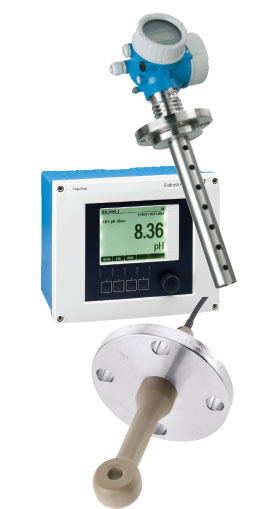

Copper has been used by humans from as early as 8000 BC. It was the first metal to be smelted from its ore 5000 BC, the first to be cast into a shape 4000 BC, and the first to be purposefully alloyed with another metal, tin, to create bronze in 3500 BC.
In the middle ages, the oxidised layer of copper was naturally leached by water, depleting the upper layers of oxidised ore and revealing the rich copper laden solutions. This prompted miners to dig deeper, heap the ore and leach it out. This is known as hydrometallurgical production, the extracted solvents can be electro-won, and almost pure copper anodes produced.
The pyrometallurgical method uses pulverisation, flotation, smelting and converting to produce anodes. The copper that is produced by precipitation in the leaching process can be added to the smelting process for further processing to anodes. During this cementation (iron precipitation) copper is produced by running the pregnant leach solution through a pile of scrap iron or steel. An electromechanical process takes place and the copper precipitates onto the iron/steel, which in turn dissolves into the solution. It detaches as flakes or powder.
The pregnant leachate that is produced from the process, will contain the leaching agent, either water or H2SO4 for oxide ores. Acid cure and acid-ferric cure are used for mixed ores. Some plants use an acid/kerosene mix. The process has to remove and recover the copper from the leachate, and remove impurities. This process has to be controlled, and as we know, when we measure, we can control.
Ores that have been mined, crushed and dumped on impervious pads, are usually sprinkled or sprayed with the leaching solution, in the heap leaching process. Flooding or trickle systems can be used for dump leaching. The pregnant liquor is then fed to a solvent extraction plant, which can be optimised by various methods.
Maximum extraction with minimum wastage
Endress+Hauser suggests that by measuring the pH, conductivity and interface levels, the process can be managed and optimised for maximum extraction, and minimum wastage.
Most important in the solvent extraction is detection and monitoring of the depth of the organic phase. The copper is trapped in the top layer. Automation is the norm in modern plants, since this does away with manual dipping, and the subsequent errors that it can produce. To this end, with the aid of Sensorfusion, Endress+Hauser has taken the reliability and accuracy of its guided wave radar and capacitance level, and combined them into one device, which will simultaneously provide a reliable and accurate measurement of the top and interface levels, even in emulsion layers.
To assure the correct metal extraction, plants need to measure the conductivity of the settling chamber. This measurement will ensure that it has control of the transition stage from organic to aqueous. If not correctly controlled, this may cause ‘mud’, and as a result plant downtime and wastage of additives. The Indumax CLS50D sensor and a CM44x is used for this measurement. The CLS50D is an inductive conductivity sensor that can withstand high temperatures and has high chemical resistance. It has the added advantage of having Memosense digital technology.
To control the addition of solution, and the returned aqueous raffinate, we need to know the pH values. For this we use the CPF81D PH sensor. It is a robust, low maintenance sensor with Memosense digital technology.
Uranium, gold, palladium and platinum are commodities that can go through a similar process, but with differences in the refining stages.
For more information contact Pieter Andjelkovic, Endress+Hauser, +27 (0)11 262 8000, [email protected], www.za.endress.com
| Tel: | +27 11 262 8000 |
| Email: | [email protected] |
| www: | www.endress.com |
| Articles: | More information and articles about Endress+Hauser South Africa |

© Technews Publishing (Pty) Ltd | All Rights Reserved